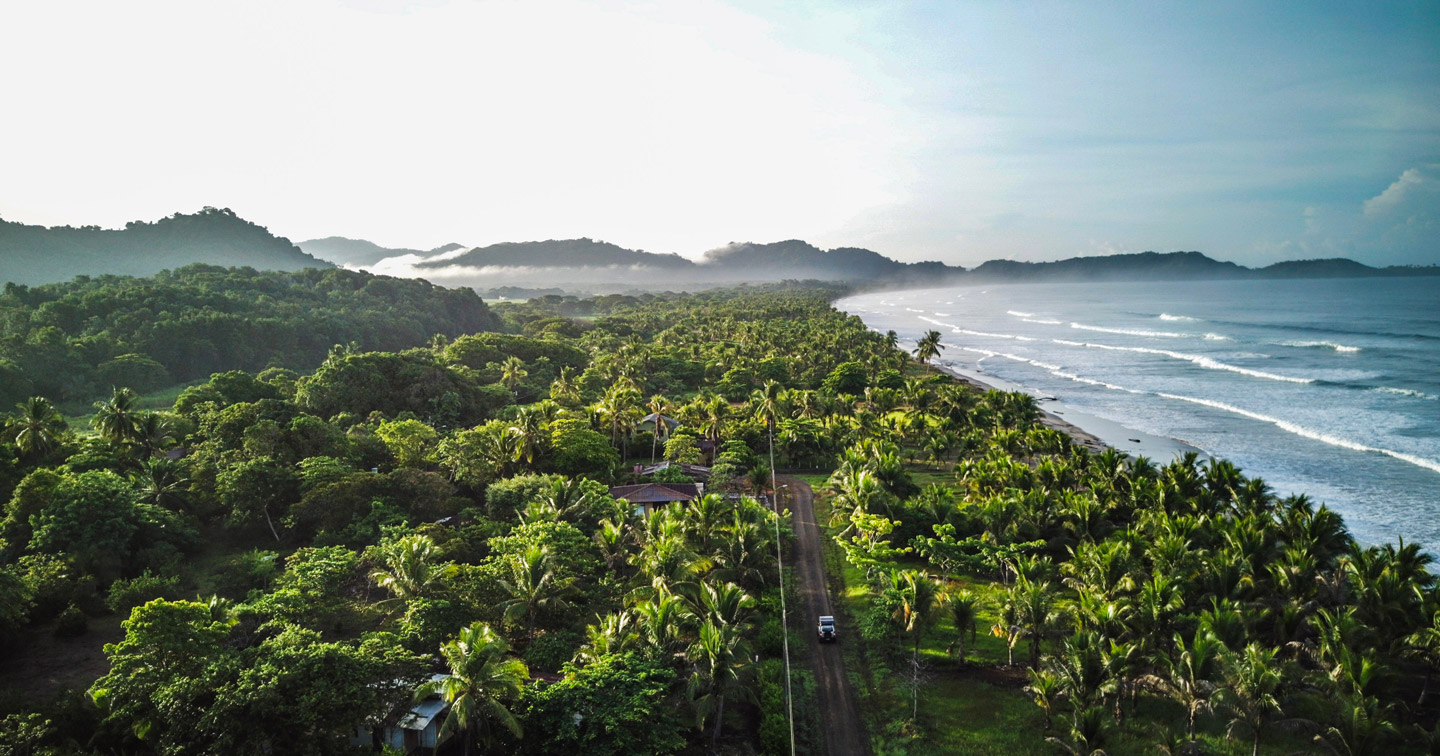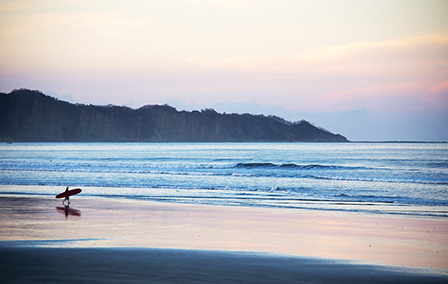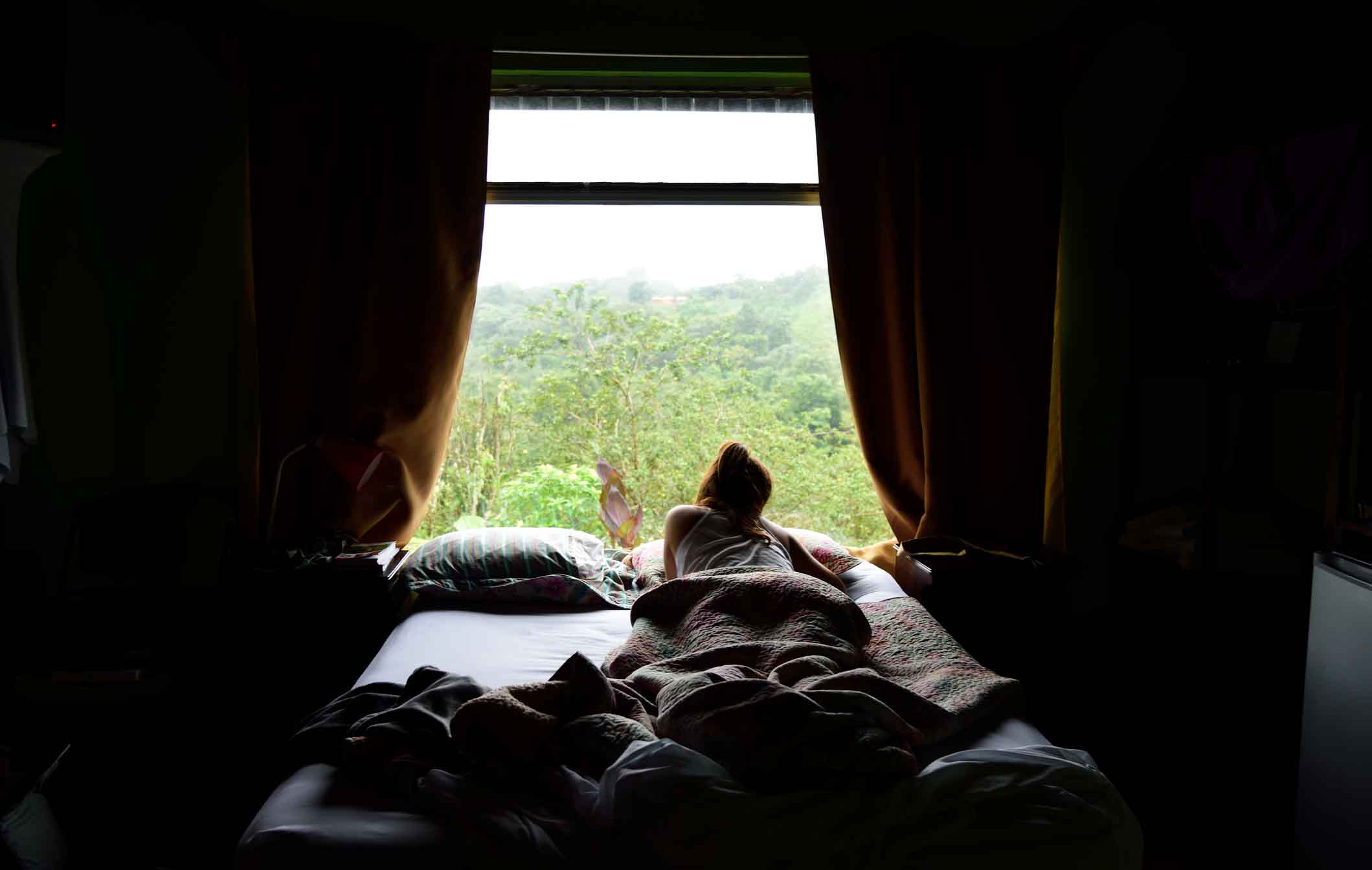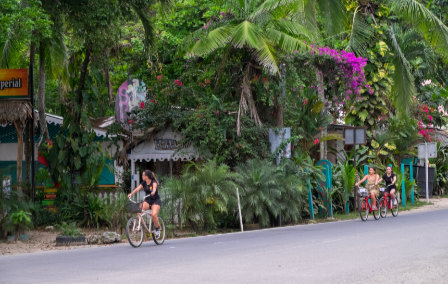Published 28th Jun. 2021
Reading time
'Pura Vida'...or, 'pure life' in English, is the phrase heard everywhere in Costa Rica, but it's not just a motto to describe how to live your life. The Ticos and Ticas (male and female Costa Ricans) use the phrase in many situations. Yes, the underlying meaning is to try and live a 'pure' life, yet for each individual, that will be very subjective. It also has so many underlying synonyms. 'Pura Vida' is said as a form of 'thank you', as 'ok cool', to mean 'yes' and in many other scenarios where the locals wish to express their happiness.
Costa Rica is a breath-takingly diverse country. From its rich biodiversity and wildlife to the wide array of activities and adventure on offer, the beaches and, of course, it's efforts to be eco-friendly and maintain a strong focus on sustainability. Peel away its myriads layers and you'll find 'Pura Vida' at the heart of it all. Read on for our guide of how to embrace this laid-back way of life.
Interesting fact: Costa Rica makes up just 0.03% of the world's land mass (comparable to West Virginia in the USA and about 5 times smaller than the UK), but is home to more than 5% of the world's biodiversity. Naturally, the wildlife is most prominent in the national parks, such as Tortuguero in the northeast on the Caribbean side, Manuel Antonio on the Pacific Ocean and Corcovado to the far south-west on the Osa Peninsula. That said, it won't be unusual to see some of the animals hanging around the lodges as you're having breakfast on the open-air terrace, even before venturing out on a park tour. Monkeys, sloths, lizards, a huge variety of colourful birds (such as toucans and red macaws), and the iconic red-eye bull frogs (although these little fellas are a bit shy in the daytime and are mostly nocturnal) are all prominent throughout the country.
If adrenalin and action are more up your street, there's no shortage of heart pumping choices. Most commonly, zip-lining through the canopy of the forests in Arenal and Monteverde is on most visitor's list of must-dos. Along with volcano exploring, white water rafting, canyoning, rapelling down lush waterfalls (refreshing in the humid heat), biking, or even something a little more tranquil for the less adventurous such as a gentle hike, walking along the hanging bridges that straddle some of the rainforests, (phew, let me take a breath!), there's never a shortage of things to do.
With a collective 800 miles of coastline in Costa Rica on the Pacific and Caribbean coasts, you would expect there to be beaches galore in Costa Rica. On the Caribbean side, for a laid-back vibe with a strong Caribbean influence (think reggae and afro-Caribbean cuisine), Puerto Viejo de Talamanca on the far south-eastern side is a very low-key beach destination, with calmer waters. The Pacific coast is the more popular, especially with the surfing community who continue to discover new spots for catching great waves. Although Corcovado National Park sits on the Pacific Ocean, it's not a beach destination so it can be nicely combined with a beach stay a little further up on Uvita Beach and Hermosa Beach, which together make up Whale Fin Beach. Continuing North, another National Park, Manuel Antonio, also sits on a beach and is another popular wildlife/beach combo from the same location. The Nicoya Peninsula is home to Santa Theresa, a true 'surf dude' town, which despite having plenty of high-end accommodation, feels bohemian and bare boned, with an undeveloped road running through it. Completing the coast to coast whistle stop tour of Costa Rica's beaches is Tamarindo and the surrounding bays, which offer more seclusion and calmer waters, making them more suitable for swimming.
With so much effort now being made globally for us all to become more sustainable, Costa Rica has been at the forefront of this for some time and the country is considered a global leader in these efforts. 99% of its electricity is produced from renewable sources and the country is aiming to be carbon neutral by 2020. It is clear that the tourist industry is playing its part too, beginning with the water fountains in the airport, through to the many hotels not providing bottled water or dispensing with air conditioning. A lot of hotels are also using solar and hydro energy sources to power their properties. Single use water bottles aren't common in hotels and instead, it's completely safe to drink tap water and use a refillable bottle. While sipping on a mojito made with Costa Rica's finest rum there shouldn't be a plastic straw in sight. Pura Vida!

Whether you want to hit the hotspots or venture off the beaten track, our consultants will create a bespoke Costa Rica trip for you. Having scoured the country for the best properties, we offer everything from rustic lodges to luxurious hideaways. We can take you away from the crowds using our knowledge of hidden beauty spots; so instead of queuing for a waterfall in Arenal, you can enjoy a river all to yourself in Bijagua. With something for both families and couples, Costa Rica is best discovered on a self-drive trip – don't worry, you can leave the route planning to us.
ENQUIRE NOWPractical advice and inspiration for your next trip

Sandwiched between Panama and Nicaragua, among deliciously verdant greenery, lies the happiest country on earth: Costa Rica. Overflowing with exotic wildlife, misty volcanic peaks and surfers’ havens, it’s no wonder this pocket-sized country has become increasingly popular with travellers. A craggy chain of towering volcanoes act as a spine, running through the country’s middle and separating the two palm-fringed coastlines that feature on many a bucket list.
1st February 2025 - Costa Rica Travel Inspiration

Pint-sized Costa Rica might be small, but it sure is mighty. Fusing thrumming cities like San Jose and Limon with outstanding nature, this pocket of paradise boasts two rugged coastlines, a strip of smouldering volcanoes and plenty of lush rainforests, jade green lakes and misty mountain peaks. It’s no wonder we struggled to pick just six of the most beautiful places in Costa Rica for this roundup. From waterfall chasing at Tenorio Volcano National Park and rafting down the Pacuare River,
21st December 2024 - Costa Rica The Natural World

The ‘know-it-all’ of the eco class, Costa Rica is consistently listed as one of the ‘greenest’ and ‘happiest’ places on the planet. And this eco-minded attitude is summed up by their ubiquitous slogan ‘Pura Vida’, which translates to ‘pure life’ or ‘simple life’. In order to protect its resplendent landscapes and dizzying biodiversity, the country has long championed sustainable travel, through Community Based Tourism initiatives, renewable energy and environmental education.
25th October 2023 - Costa Rica Responsible Travel

Our team of destination experts will get to know you and your unique requirements for your holiday

We work with you to build an ultra-personalised holiday itinerary with your choice of accommodation, experiences and activities

All of our holidays include little extras designed to make a big difference to your trip, from fast-tracking you through airport check-in and security to our network of local Concierges